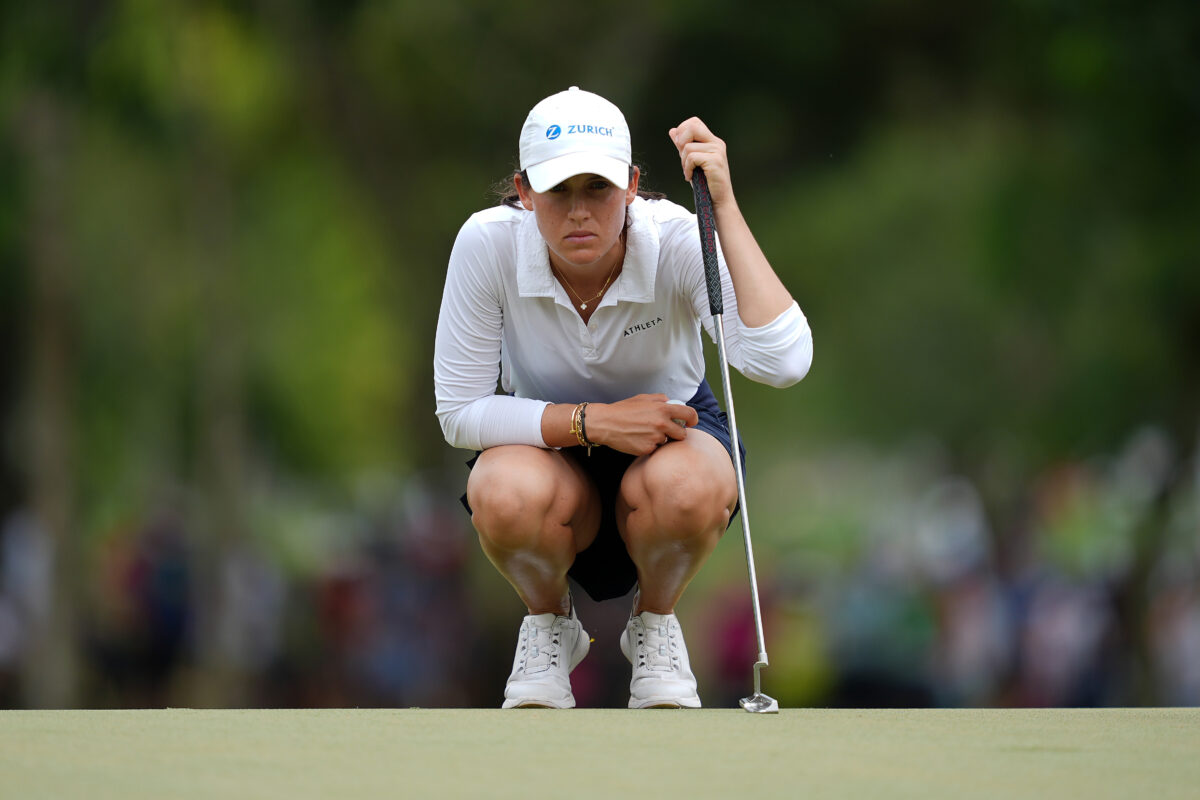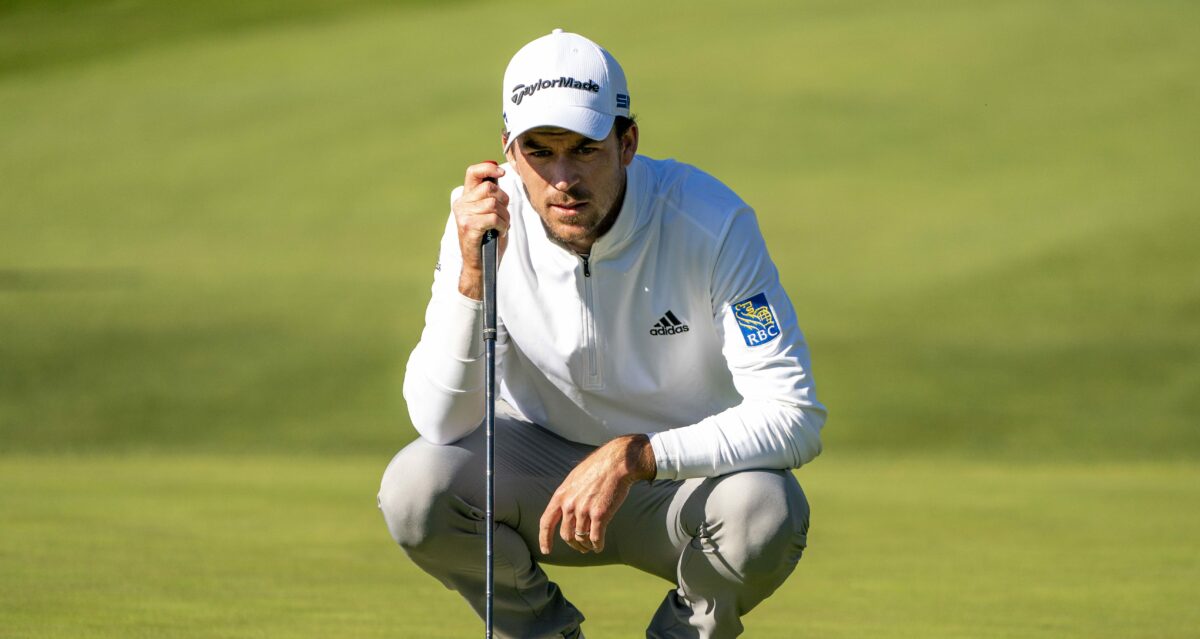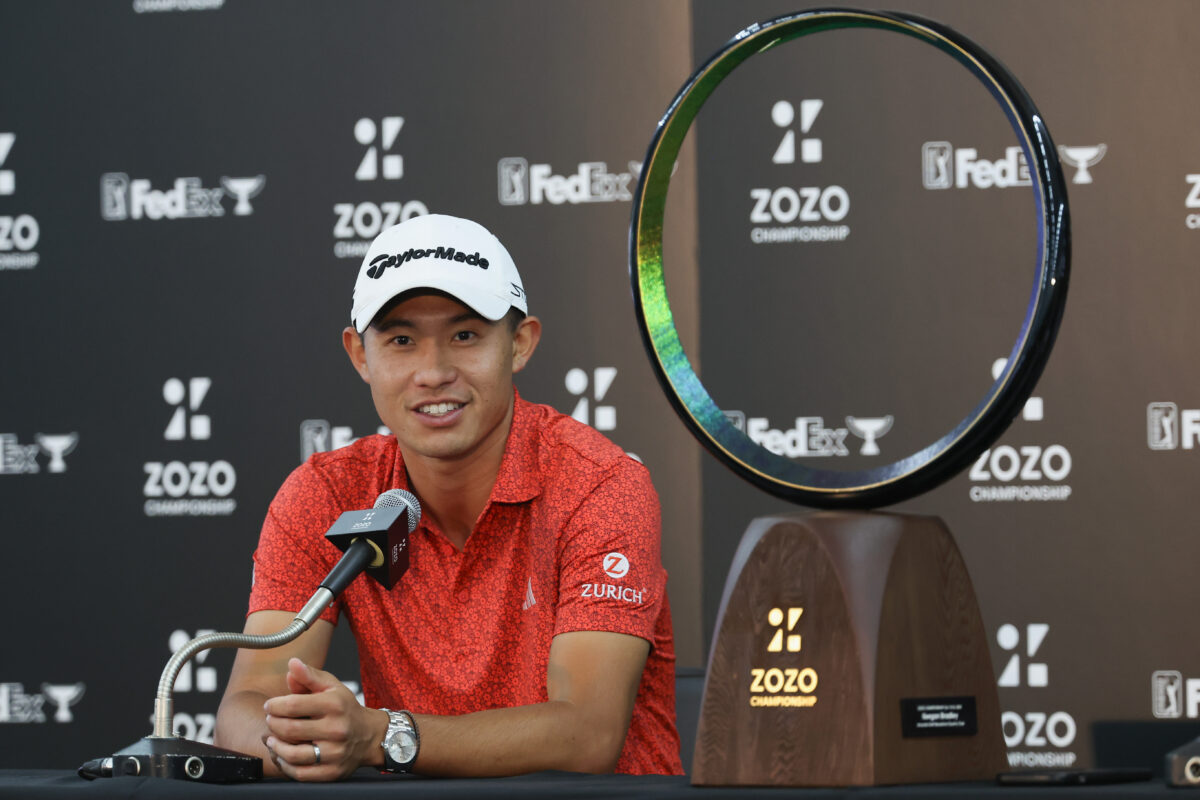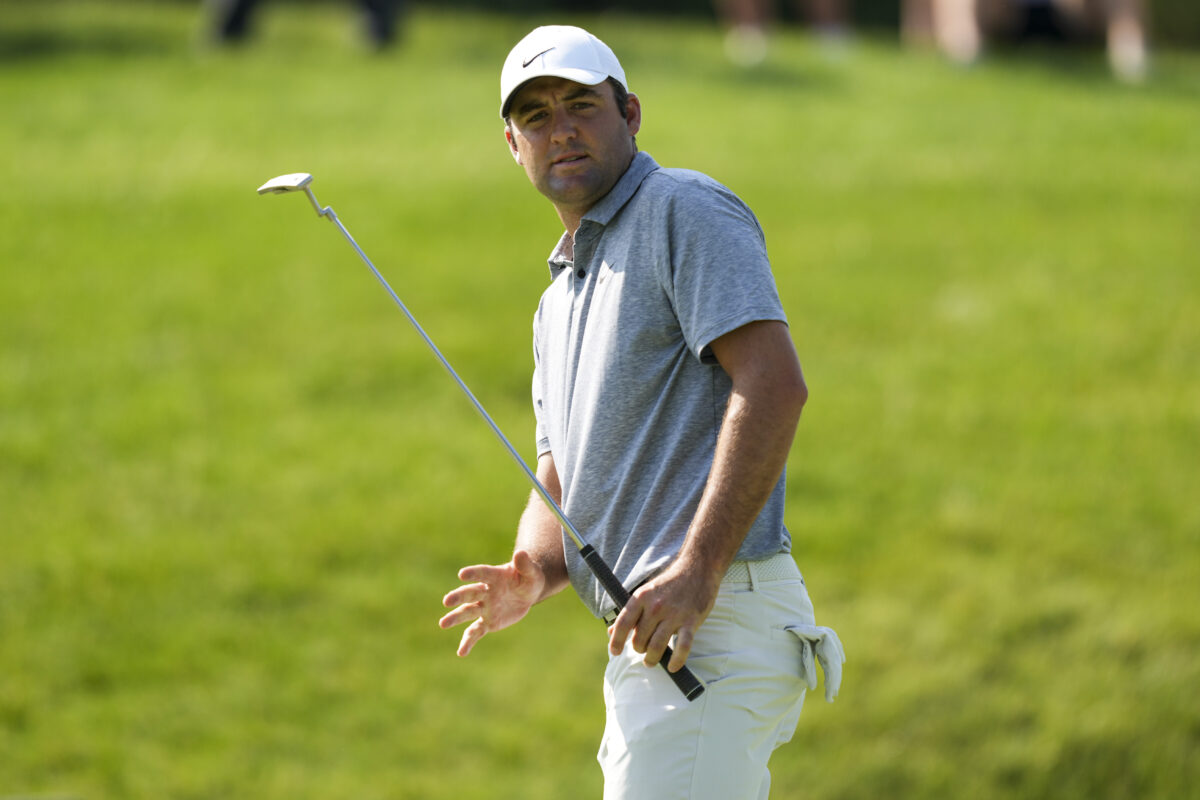Eight-foot putts are not typically stressful for PGA Tour pros, but the 8-foot par putt that Max Homa faced on Friday morning on the fifth at Augusta National had to be made if he was going to stay tied for the lead at the 2024 Masters. On the outside, he looked calm, but on the inside, he had to be feeling the pressure.
After both Tiger Woods and Jason Day finished the hole, the dance floor was Homa’s. With one foot on either side of his golf ball, he bent his right arm at about a 90-degree angle and held up his index finger and middle finger while staring at the hole. After backing up four paces, bending to take another look toward the hole, and then getting into his address position, Homa set his putter behind the ball. No practice strokes. He made a quick glance toward the cup, made his stroke and buried the putt.
“I mean, that is special,” said Colt Knost on the ESPN+ broadcast before Billy Ray Brown added, “That’s what champions do.”

But what was Homa doing with his fingers, which appeared to be what Will Zalatoris, Viktor Hovland, Keegan Bradley, Tommy Fleetwood, Collin Morikawa, Adam Scott and a growing number of other PGA Tour pros are doing? Like those other pros, Homa uses AimPoint Express. This green-reading technique was developed by Mark Sweeney, the man who created the AimPoint putting line that broadcasters like Golf Channel, NBC and CBS used to show viewers a virtual path a ball needed to travel to finish in the hole.
“AimPoint Express is a dramatic simplification of what is a very complicated computer program to figure out how the ball goes from Point A to Point B and goes into the hole,” Sweeney said. “AimPoint Express takes about 100,000 lines of code and converts it into the player feeling how much side tilt there is in the putt.”
What television viewers did not see during the broadcast of Homa’s putt on the fifth hole was that he had not only straddled his golf ball before he putted, but that he also stood halfway between his golf ball and the hole for a few seconds and tried to feel the tilt of the putting surface. Through practice and some training, Homa and other golfers can feel the difference between a one-, two- and three-percent slope to one side or another using their feet.
Then, standing over their golf ball, they extend an arm and hold up the number of figures that correspond to the estimated number of degrees in the tilt they felt — one finger for a one-percent slope, two fingers for a two-percent slope and so on.

Sweeney accidentally discovered the relationship between the slope of a green, the length of a golfer’s arm and the width of a person’s fingers.
“I had a much more complicated method of reading greens prior to AimPoint Express,” said Sweeney. “But then I was teaching some young kids, 7- and 8-year-olds, and I had them put their thumb on the high side of the hole, just to get them aiming somewhere above the hole. It turns out that your thumb is perfect for one’s and two’s, it will get you close, but then we started experimenting with one finger per percent. We tested those reads against the math and it was insane how accurate it was. Like, it was within an inch or two every single time (from 20 feet).”
Knowing that, and seeing Homa on the fifth hole holding up two fingers, viewers familiar with AimPoint Express would know that Max was estimating that halfway to the hole, there was a two-perfect tilt in the green. From Homa’s perspective, his target on that putt was two fingers’ width to the right of the hole (probably about 4 inches right), and assuming he hit the putt directly at that target, he was right because the ball went in the cup.
Every week, pros can be seen practicing AimPoint Express and developing their sense of feel for slopes on the practice greens at PGA Tour events. Many of them bring a digital level, and as they stand along an intended putt line, they call out a slope percentage like one, two or three while their caddy looks at the level.
Surprisingly, Sweeney said, developing this skill is easy.
“Within about 15 minutes, most people are picking up half-degrees of slope,” he said. “People are much, much better at feeling slope than they think. Nobody is ever off by more than one percent. Like, it’s almost unheard of that a player is off by more than one percent. No one calls a one a three or a one a four because they are so dramatically different.”

Sweeney claims that anybody, with a bit of practice, can accurately estimate to a half-percent. He also encourages golfers to calculate the slope along their putt’s length twice around halfway between the ball and the hole and use the bigger of the two estimations for their read. Some players, like Homa, take one reading and then turn around and repeat the estimation facing toward the ball to confirm their first reading.
In a Golf Channel interview, Homa said, “Your eyes can lie to you a lot, but your feet, typically, will never lie.”
Tiger Woods does not use AimPoint Express, and neither does Jordan Spieth or Jason Day. Brad Faxon, Loren Roberts and Ben Crenshaw never used it either. Some golfers have a great feel for green reading, spotting slopes and contours on the putting surface and understanding how putts will roll. However, many golfers are not blessed with this ability. Sweeney hates hearing that the skill will come with time and experience.
“As a coach, you have to take someone who doesn’t have a skill and give them that skill,” said Sweeney, who works with several tour pros and teaches lessons at Waldorf Astoria Golf Club in Orlando, Florida. “How do you teach someone green reading if they don’t naturally see what a good green reader sees? I thought ‘Just go do it and you’ll get better,’ was a really crappy answer. It’s like a full-swing instructor saying to someone, ‘I know you’re slicing it off the tee, but just go hit a lot of balls and you’ll get better.'”

Aimpoint Express removes the need to walk around a hole and see your intended putt from multiple angles, so for Sweeney, it does not slow play as some people think.
Sweeney postulates that the better a golfer gets at reading greens, the more time they can spend working on improving distance control and developing the quality of their putting stroke.
“It’s really helped me to read the greens, obviously, but it’s turned a lot of that into better speed,” Homa said on Golf Channel. “I’m shocked more people don’t do it, if I am being honest.”












